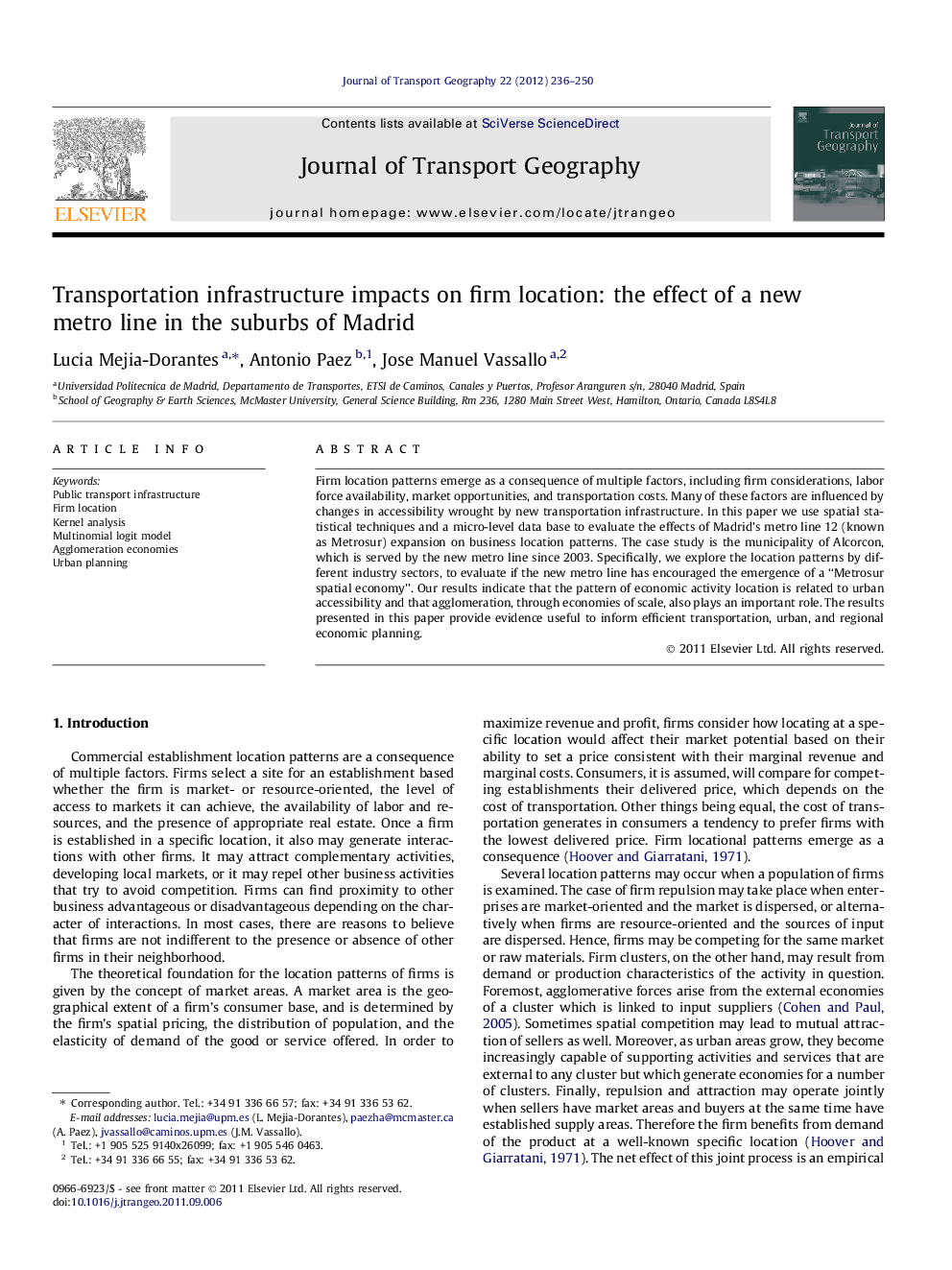| Article ID | Journal | Published Year | Pages | File Type |
|---|---|---|---|---|
| 1059438 | Journal of Transport Geography | 2012 | 15 Pages |
Firm location patterns emerge as a consequence of multiple factors, including firm considerations, labor force availability, market opportunities, and transportation costs. Many of these factors are influenced by changes in accessibility wrought by new transportation infrastructure. In this paper we use spatial statistical techniques and a micro-level data base to evaluate the effects of Madrid’s metro line 12 (known as Metrosur) expansion on business location patterns. The case study is the municipality of Alcorcon, which is served by the new metro line since 2003. Specifically, we explore the location patterns by different industry sectors, to evaluate if the new metro line has encouraged the emergence of a “Metrosur spatial economy”. Our results indicate that the pattern of economic activity location is related to urban accessibility and that agglomeration, through economies of scale, also plays an important role. The results presented in this paper provide evidence useful to inform efficient transportation, urban, and regional economic planning.
► Changes in accessibility wrought by a new transportation infrastructure influence the urban form of a city. ► Location patterns of economic activities are related to accessibility. ► Agglomeration, through economies of scale, also plays an important role in firm’s location choice.
